NYC-ARTS Top Five Picks: January 7-January 13 | Syd Solomon: Concealed and Revealed
January 8, 2022 - NYC-ARTS
NYC-Arts Top Five Picks: January 7 – January 13
Syd Solomon: Concealed and Revealed
Thu, Jan 06, 2022 - Sat, Feb 05, 2022
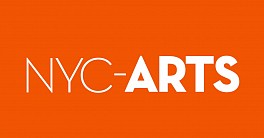
January 8, 2022 - NYC-ARTS
NYC-Arts Top Five Picks: January 7 – January 13
Syd Solomon: Concealed and Revealed
Thu, Jan 06, 2022 - Sat, Feb 05, 2022
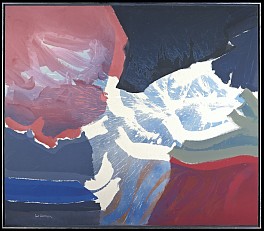
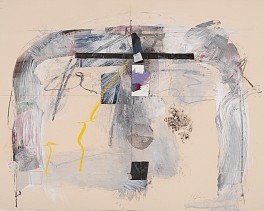
December 30, 2021 - Mark Segal
Encountering the Parrish
“Encounters: Recent Acquisitions to the Permanent Collection,” an exhibition of work by nine contemporary artists with deep connections to the East End, is on view at the Parrish Art Museum in Water Mill through Feb. 27.
New works by Barthelemy Toguo and Tomashi Jackson were created for their solo shows at the Parrish. Mr. Toguo’s “Homo Planta A” reflects his interest in nature and sustainability, while Ms. Jackson’s “The Three Sisters” was inspired by interviews with members of local indigenous, Black, and Latinx communities.
Darlene Charneco, Esly E. Escobar, Laurie Lambrecht, and Candace Hill Montgomery developed their works for Parrish Road Show exhibitions. Ms. Charneco’s work considered the symbiotic co-evolution of insects and plants, while Mr. Escobar dripped paint on a canvas until a character was revealed.
Ms. Lambrecht’s piece is one of a series of print and fiber works inspired by the Madoo Conservancy in Sagaponack. Ms. Montgomery’s weaving, first shown at the Sag Harbor Whaling Museum, examines the #MeToo movement.
Rachel Feinstein’s interest in the Rococo inspired her plaster sculpture “See You Soon,” while Sara VanDerBeek’s abstract photographs were motivated in part by members of the Bauhaus weaving workshop, quilts, and Pre-Colombian textiles and ceramics.
Frank Wimberley’s “Wrinkles” (1994) is one of his tactile, multilayered abstract paintings, which he has described as “absolutely personal and universal.”
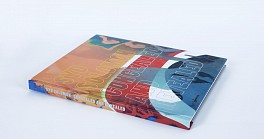
December 21, 2021 - Berry Campbell
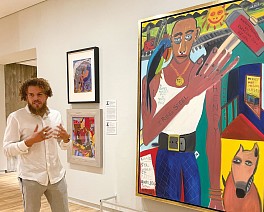
December 10, 2021 - Hudson River Museum
Join art historian Bentley Brown for a walk through African American Art in the 20th Century to discuss the importance of how African American artists have framed the narratives in which they see themselves through medium, context, and storytelling throughout the twentieth century. In the course of this conversational tour, Brown will make a special stop at the signature work, John Henry, an imposing 1979 oil painting by his father, Frederick Brown.
Bentley Brown is a multidisciplinary artist, curator, and doctoral student at The Institute of Fine Arts, NYU. His research at the Institute explores the pioneering role of Black artists and Black creative spaces within New York City’s contemporary art movements of the late 1960s through the mid 1980s. In his artistic practice, Brown uses the mediums of canvas, found objects, photo-collage, and film to explore themes of Black identity, cosmology, and American interculturalism.
Saturday, December 11, 2021
1pm
More information
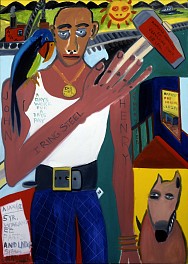
December 6, 2021 - Maria Lisella for VNY La Voce di New York
This year, when giving holiday gifts, skip the gift cards, the Amazon Prime products and deals and think way outside that digital, impersonal box, give and share a LIVE experience instead. Let others jam malls and run around frenzied looking for the “perfect” anything, just dial up a museum, or book timed tickets online, knowing capacity is limited and museums are not jammed just before the holidays.
Accompanying a niece, nephew, cousin, or friend to an exhibit will stay with the giftee. Selfies taken in front of that Mondrian or Chagall, Matisse or Richard Mayhew and Felrath Hines or Sol LeWitt are certain to outlast flashy yoga wear, a tushy spa warmer, or a reinvented shower cap.
A trio of manageable museums are currently exhibiting some of the most talked about work in town: the Hudson River Museum, the Jewish Museum, and the Morgan Library and Museum are three off-the beaten track venues for pint-sized immersions in carefully cultivated and curated shows.
The Hudson River Museum is the fifth and final venue to host this impressive and wide-ranging collection African American Art in the 20th Century, which brings one of the most significant national collections of African American art to Yonkers. Featuring some of the country’s most famous Black artists–it was drawn from the permanent collection of the Smithsonian American Art Museum–the exhibit features paintings and sculptures by 34 artists who came to prominence during the period bracketed by the Harlem Renaissance starting in the 1920s, the civil rights movement in the 1960s, and beyond.
In addition to Romare Bearden, artists include Frederick Brown, Beauford Delaney, Jacob Lawrence, Loïs Mailou Jones and Renée Stout, whose work ranges in style from portraiture to modern abstraction, to the postmodern assemblage of found objects.
Move from the galleries to the Planetarium or consider the Glenview Holiday Tour, the Gilded Age mansion that abuts the museum featuring Yonkers’ favorite dollhouse, Nybelwyck Hall. For a virtual experience, consider the Studio Tour and Demonstration with Jamel Robinson on Jan. 12 at the artist in his own studio.
https://www.hrm.org/
Open Thursday through Sunday, 12-5 pm
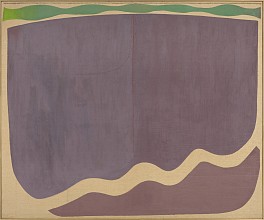
December 3, 2021 - Berry Campbell
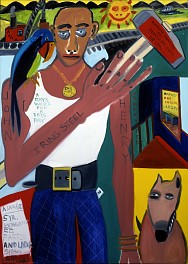
November 25, 2021 - Jackie Lupo for The Rivertowns Enterprise
The Hudson River Museum is presenting an important survey exhibition, “African American Art in the 20th Century,” that was organized by the Smithsonian American Art Museum and includes 43 objects from their permanent collection.
The show, on display through Jan. 16, 2022, presents paintings and sculpture by 34 African American artists who became famous in the decades between the Harlem Renaissance and the civil rights movement. The works reflect the artists’ responses to the evolving international aesthetic movements of the 20th century, as seen through the lens of race in America. As one of these artists, Jacob Lawrence, said in 1951, “My pictures express my life and experience… the things I have experienced extend to my national, racial and class group. I paint the American scene.”
HRM director and CEO Masha Turchinsky called the Smithsonian’s collection “one of the most significant national collections of African American art. This is a pivotal opportunity for the public to experience powerful works by these American luminaries at the exhibition’s only New York venue.”
The African American experience as shown by these artists embraced both rural and urban life.
In 1940, William H. Johnson, a native of South Carolina, painted “Sowing” in oil on burlap. He used brilliant colors and the naive style characteristic of many of his paintings of country life in the South in the early 20th century.
But the rural South could also be inhospitable for Black people. At first glance, Norman Lewis’ 1962 “Evening Rendezvous” seems largely abstract. Blink, and a sinister scene appears: a crowd of white-hooded Klansmen milling around a red-hot fire. According to the Smithsonian’s label for this painting, the abstract-art-obsessed critics of the time debated whether Lewis meant to make a political statement with this painting.
Frederick Brown chose John Henry, a freed slave who was a hero of American folklore and protest music, as the subject for his 1979 oil painting. Brown himself grew up near the steel mills of South Chicago, and his portrayal of Henry is a comment on the contemporary concerns of American laborers.
Cities figured prominently in the Black exodus from the South, but life wasn’t always easier there. The artistic trope of the “portrait of an artist in his studio” is turned on its head in Palmer Hayden’s 1930 oil, “The Janitor Who Paints.” A Black janitor, whose basement apartment is strewn with the tools of his maintenance trade, takes a break from that job to don a jaunty beret, as he goes to his easel to work on a portrait of a mother and child. In real life, Hayden had to support himself as a janitor in order to paint, as did a friend and fellow artist, Cloyd Boykin.
The inner city is also the setting for Beauford Delaney’s 1946 oil painting, “Can Fire in the Park.” Wielding the paintbrush in post-Impressionist style to create a patchwork of vivid colors, he depicts a typical city corner with street lamps, signs, and a manhole cover. Six men, possibly homeless, huddle around a trash can to warm their hands.
Cities continue to fascinate and repel Black artists. But the mood of Charles Searles’ 1975 panoramic acrylic, “Celebration,” is exuberant. It could be a street festival in the artist’s hometown of Philadelphia, but was clearly influenced by the artist’s earlier trip to Nigeria. The canvas is alive with vibrant patterns and textures evoking the textiles of Africa.
A different kind of muralist was Purvis Young, whose 1988 untitled acrylic painting depicts horses surrounded by a frame of abstract rectangular designs. Young, a native of Miami, was a self-taught urban artist who began painting on scrap lumber scavenged from the inner-city neighborhood where he lived, often attaching his paintings to the boarded-up fronts of abandoned buildings.
Thornton Dial’s 1992 mixed-media painting, “Top of the Line,” combines enamel, unbraided canvas roping, and metal on plywood. This emotional, frenzied work was Dial’s response to the Los Angeles riots of 1992, when looters ran amok after a jury found four white policemen not guilty of beating an unarmed Black motorist, Rodney King.
The exhibition also includes sculpture. Sargent Johnson’s 1930s copper sculpture on a wood base, “Mask,” was one of many masks he created. Some were faithful to old African designs, and others depicted people with contemporary American hairstyles, but all were clearly designed to capture the natural beauty and dignity of his race. One also has to wonder whether his interpretations of African masks was an ironic comment on European artists, such as Picasso, who appropriated native African masks and related imagery for profit.
The exhibition’s catalog, “African American Art: Harlem Renaissance, Civil Rights Era, and Beyond,” celebrates modern and contemporary artworks in the Smithsonian American Art Museum collection by African American artists. It will be available in the Museum Shop. Extensive biographical information on all the artists in this exhibition can also be accessed by searching for an artist’s name on the website of the Smithsonian American Art Museum.
The Hudson River Museum is located at 511 Warburton Avenue in Yonkers. Museum hours are Thursday–Sunday, 12–5pm. All visitors 12+ must show proof of full vaccination or a negative PCR test taken within 72 hours of visit; those 18+ must also show proof of identity. Visitors under 12 may enter only if accompanied by an adult who can show proof of full vaccination or a negative PCR test taken within 72 hours of visit.